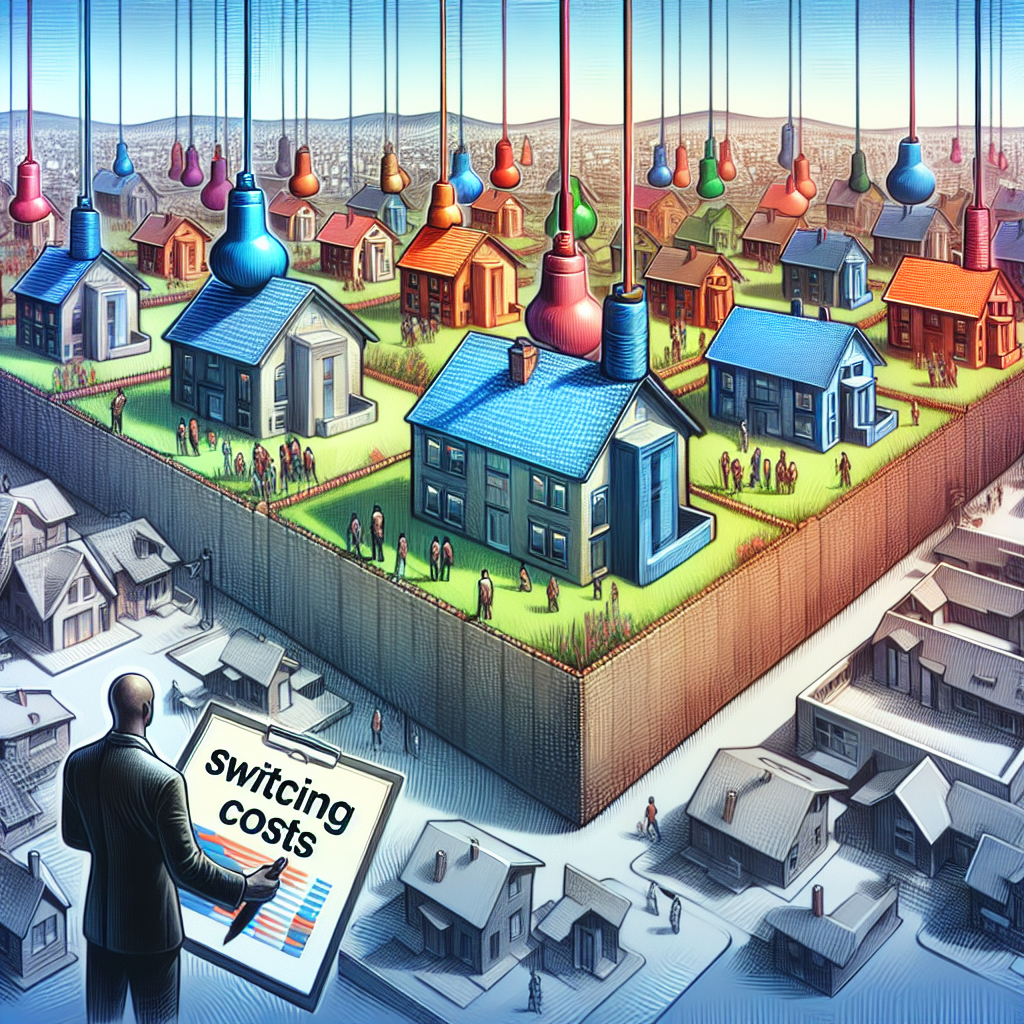-
Table of Contents
- The Impact of Switching Costs on the Housing Market: Insights from Lance Lambert
- Understanding Switching Costs
- Types of Switching Costs in the Housing Market
- The Role of Financial Costs
- Transaction Fees
- Moving Expenses
- Potential Financial Losses
- Emotional and Psychological Costs
- Attachment to Home and Community
- Stress and Uncertainty
- Time Investment
- Searching for a New Home
- Selling the Current Home
- Moving and Settling In
- Case Studies: The Impact of Switching Costs on Homeowner Decisions
- Case Study 1: The Smith Family
- Case Study 2: The Johnsons
- Case Study 3: The Millers
- Statistics on Switching Costs and Homeowner Behavior
- Strategies to Mitigate Switching Costs
- Financial Planning
- Emotional Support
- Time Management
- Conclusion
The Impact of Switching Costs on the Housing Market: Insights from Lance Lambert

The housing market is a complex ecosystem influenced by a myriad of factors, from economic conditions to individual buyer preferences. One often overlooked but crucial element is the concept of switching costs. Lance Lambert, a renowned real estate analyst, has provided valuable insights into how switching costs impact the housing market. This article delves into these insights, exploring the various dimensions of switching costs and their implications for buyers, sellers, and the market as a whole.
Understanding Switching Costs
Switching costs refer to the expenses and inconveniences that consumers face when changing from one product or service to another. In the context of the housing market, switching costs can include financial costs, emotional stress, and time investment. These costs can significantly influence a homeowner’s decision to move or stay put.
Types of Switching Costs in the Housing Market
- Financial Costs: These include transaction fees, moving expenses, and potential losses from selling a home at a lower price than its purchase value.
- Emotional Costs: The emotional attachment to a home and neighborhood can be a significant barrier to moving.
- Time Costs: The time required to search for a new home, sell the current one, and complete the moving process can be substantial.
The Role of Financial Costs
Financial costs are perhaps the most tangible form of switching costs in the housing market. These costs can be broken down into several categories:
Transaction Fees
When buying or selling a home, transaction fees can add up quickly. These include:
- Real Estate Agent Commissions: Typically, real estate agents charge a commission of 5-6% of the home’s sale price.
- Closing Costs: These can range from 2-5% of the home’s purchase price and include fees for appraisals, inspections, and title insurance.
- Mortgage Fees: Refinancing or obtaining a new mortgage can involve significant fees, including origination fees and points.
Moving Expenses
Moving to a new home involves various costs, such as hiring movers, renting a truck, and purchasing packing supplies. According to the American Moving & Storage Association, the average cost of an interstate move is around $4,300, while an intrastate move costs approximately $2,300.
Potential Financial Losses
Homeowners may face financial losses if they sell their home for less than its purchase price or if the housing market has declined since they bought the property. Additionally, early mortgage payoff penalties can add to the financial burden.
Emotional and Psychological Costs
Beyond the financial implications, emotional and psychological costs play a significant role in a homeowner’s decision to move. These costs can be particularly high for families with deep-rooted connections to their community.
Attachment to Home and Community
Many homeowners develop a strong emotional attachment to their homes and neighborhoods. This attachment can be due to various factors, such as:
- Memories: Homes often hold sentimental value, as they are the backdrop for many family memories.
- Community Ties: Long-term residents may have strong relationships with neighbors and local organizations.
- Comfort and Familiarity: Moving to a new home can be daunting, as it involves adjusting to a new environment and routine.
Stress and Uncertainty
The process of buying and selling a home can be stressful and uncertain. Homeowners may worry about finding a suitable new home, securing financing, and navigating the complexities of the real estate market. This stress can deter individuals from moving, even if they are dissatisfied with their current living situation.
Time Investment
Time is another critical factor in the decision to move. The process of buying and selling a home can be time-consuming, involving numerous steps and potential delays.
Searching for a New Home
Finding the right home can take months of searching, visiting properties, and negotiating with sellers. This time investment can be particularly challenging for busy professionals and families with young children.
Selling the Current Home
Selling a home involves preparing the property for sale, hosting open houses, and negotiating with potential buyers. This process can be time-consuming and may require homeowners to take time off work or rearrange their schedules.
Moving and Settling In
The actual process of moving and settling into a new home can take weeks or even months. Homeowners must pack, transport their belongings, and unpack in the new home. Additionally, they may need to set up utilities, change their address, and familiarize themselves with the new neighborhood.
Case Studies: The Impact of Switching Costs on Homeowner Decisions
To illustrate the impact of switching costs on the housing market, let’s examine a few case studies:
Case Study 1: The Smith Family
The Smith family has lived in their suburban home for 15 years. They have strong ties to their community, with their children attending local schools and participating in neighborhood activities. Despite their desire for a larger home, the Smiths are hesitant to move due to the high emotional and financial costs involved. The potential disruption to their children’s education and social lives is a significant deterrent.
Case Study 2: The Johnsons
The Johnsons are a young couple looking to upgrade from their starter home to a larger property. However, they are concerned about the financial costs of moving, including real estate agent commissions, closing costs, and moving expenses. Additionally, they worry about the time required to find a new home and sell their current one. As a result, they decide to stay in their current home and make renovations instead.
Case Study 3: The Millers
The Millers are retirees looking to downsize and move to a warmer climate. While they are excited about the prospect of a new lifestyle, they are overwhelmed by the emotional and logistical challenges of moving. The thought of leaving their long-time home and community is daunting, and they are unsure about the process of selling their current home and finding a new one. Ultimately, they decide to postpone their move.
Statistics on Switching Costs and Homeowner Behavior
Research and statistics provide further insights into the impact of switching costs on homeowner behavior:
- A study by the National Association of Realtors found that the average homeowner stays in their home for 13 years, up from 8 years in 2010. This increase is partly attributed to higher switching costs.
- A survey by Zillow revealed that 36% of homeowners who considered moving in the past year decided against it due to the high costs and stress associated with the process.
- According to a report by the Joint Center for Housing Studies at Harvard University, older homeowners are less likely to move due to strong emotional ties to their homes and communities.
Strategies to Mitigate Switching Costs
While switching costs can be a significant barrier to moving, there are strategies that homeowners and real estate professionals can employ to mitigate these costs:
Financial Planning
Homeowners can work with financial advisors to plan for the costs associated with moving. This planning can include budgeting for transaction fees, moving expenses, and potential financial losses. Additionally, homeowners can explore options for refinancing or obtaining a bridge loan to ease the financial burden.
Emotional Support
Real estate professionals can provide emotional support to homeowners throughout the moving process. This support can include helping homeowners find a new community that meets their needs and providing resources for managing the stress of moving.
Time Management
Homeowners can work with real estate agents to streamline the buying and selling process. This collaboration can include setting realistic timelines, prioritizing tasks, and utilizing technology to simplify the search for a new home.
Conclusion
Switching costs play a significant role in the housing market, influencing homeowner decisions and market dynamics. Financial costs, emotional and psychological barriers, and time investment can deter individuals from moving, even when they desire a change. By understanding these costs and employing strategies to mitigate them, homeowners and real estate professionals can navigate the complexities of the housing market more effectively.
Lance Lambert’s insights into switching costs provide valuable guidance for anyone involved in the housing market. By recognizing the impact of these costs and addressing them proactively, we can create a more dynamic and responsive housing market that better meets the needs of homeowners and communities.
In summary, switching costs are a multifaceted issue that requires careful consideration and strategic planning. By addressing financial, emotional, and time-related barriers, we can help homeowners make informed decisions and foster a more vibrant and resilient housing market.








